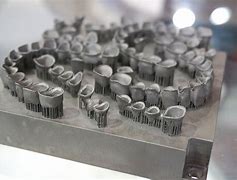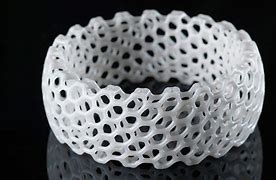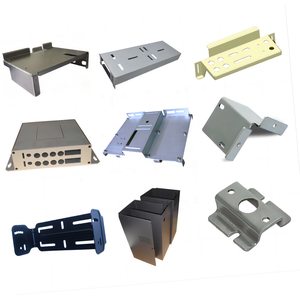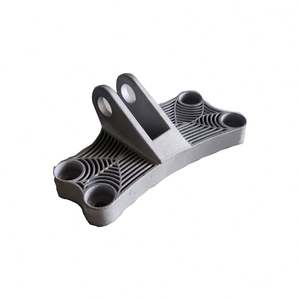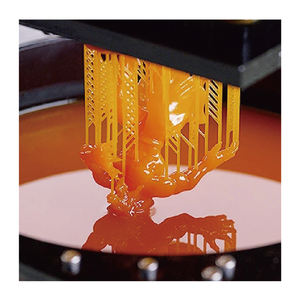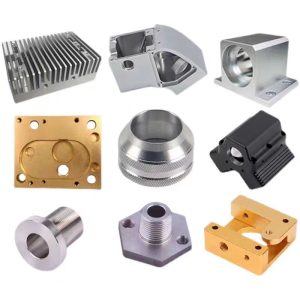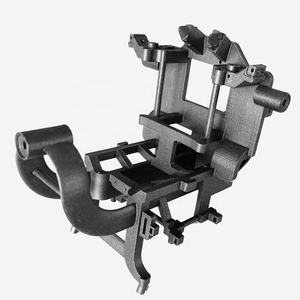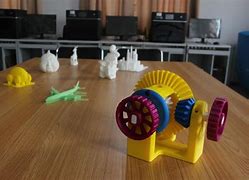Discover a professional 3D printing powder supplier
(What are the Requirements for the Performance of Metal Powder in 3D Printing)
To meet the material requirements of 3D printing, what conditions need to be
met by the metal powder?
1. Purity
Ceramic inclusions will significantly reduce the performance of the final
product, and these inclusions generally have a higher melting point, which is
difficult to sinter and shape, so there must be no ceramic inclusions in the
powder.
In addition, the oxygen and nitrogen content also needs to be strictly
controlled. At present, the powder preparation technology used for metal 3D
printing is mainly based on the atomization method. The powder has a large
specific surface area and is easy to oxidize. In special applications such as
aerospace, customers have more stringent requirements for this indicator, such
as high-temperature alloy powder. The oxygen content is 0.006%-0.018%, the
oxygen content of the titanium alloy powder is 0.007%-0.013%, and the oxygen
content of the stainless steel powder is 0.010%-0.025%.
2. Powder particle size distribution
Different 3D printing equipment and forming processes have different
requirements for powder particle size distribution. At present, the commonly
used powder particle size range for metal 3D printing is 15-53μm (fine powder),
53-105μm (coarse powder), and in some cases, it can be widened to 105-150μm
(coarse powder).
The choice of metal powder particle size for 3D printing is mainly based on
metal printers with different energy sources. Printers that use lasers as energy
sources have a fine focus spot and are easier to melt fine powder. It is
suitable to use 15-53μm powder as consumables. The powder replenishment method
is to spread the powder layer by layer; the powder spreading printer using
electron beam as the energy source has a slightly coarse focus spot, which is
more suitable for melting coarse powder, mainly suitable for the use of coarse
powder of 53-105μm; for coaxial powder feeding type For printers, powder with a
particle size of 105-150μm can be used as consumables.
3. Powder morphology
The morphology of the powder is closely related to the preparation method of
the powder. Generally, when a metal gas or molten liquid is transformed into a
powder, the shape of the powder particles tends to be spherical, and when a
solid state becomes a powder, the powder particles are mostly irregular shapes,
and most of the powder prepared by the aqueous electrolysis method is dendritic.
Generally speaking, the higher the sphericity, the better the fluidity of the
powder particles. 3D printing metal powder requires a sphericity of 98% or more,
so that powder spreading and powder feeding are easier to perform during
printing.
4. Powder fluidity and bulk density
The fluidity of the powder directly affects the uniformity of powder
spreading during the printing process and the stability of the powder feeding
process.
The fluidity is related to the powder morphology, particle size distribution
and bulk density. The larger the powder particle, the more regular the particle
shape, and the smaller the proportion of extremely fine powder in the particle
size composition, the better the fluidity; the particle density remains
unchanged. As the relative density increases, the flowability of the powder
increases. In addition, the adsorption of water and gas on the surface of the
particles will reduce the fluidity of the powder.
The bulk density is the powder mass per unit volume when the powder sample is
naturally filled with the specified container. Generally, the coarser the powder
size, the greater the bulk density, and the powder with the finer and thicker
can obtain a higher bulk density. The influence of density on the density of the
metal printed final product is still inconclusive, but the increase in the bulk
density can improve the flowability of the powder.
About 3dprintingpassion
3dprintingpassion is a trusted global chemical material supplier & manufacturer with
over 12 years experience in providing super high-quality chemicals and
Nanomaterials. The company export to many countries, such as USA, Canada,
Europe, UAE, South Africa, Tanzania,
Kenya,Egypt,Nigeria,Cameroon,Uganda,Turkey,Mexico,Azerbaijan,Belgium,Cyprus,Czech
Republic,Brazil, Chile, Argentina, Dubai, Japan, Korea, Vietnam, Thailand,
Malaysia, Indonesia, Australia,Germany, France, Italy, Portugal etc. As a
leading nanotechnology development manufacturer, 3dprintingpassion dominates the market.
Our professional work team provides perfect solutions to help improve the
efficiency of various industries, create value, and easily cope with various
challenges. If you are looking for metal powder for 3d printing, please send an email to:
sales2@nanotrun.com
(What are the Requirements for the Performance of Metal Powder in 3D Printing)

